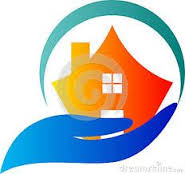History repeats: The high stakes of the digital divide for seniors and why it matters.
2024 What's Next Longevity Venture Summit (online)
2024 Longevity Venture Summit (DC)
 An optimistic view of home care’s future as seen from 2012. Several times in the past decade, interviews were conducted with experts that lead to some reports about the home care industry. This chart came from a report, The Future of Home Care Technology 2012 that was sponsored by Microsoft, Verizon and LivHome, in 2012. And represents a vision for home care and what technology should support. To build this chart, interviews were conducted that included senior execs from Philips, the VA, Visiting Nurse Services, home care associations, Home Instead, Volunteers of America, and several home care organizations. As seen in 2012, the future of home care would transform, supported by software. Some of these changes occurred, particularly care delivery in the home, the growing adoption of health-related portals:
An optimistic view of home care’s future as seen from 2012. Several times in the past decade, interviews were conducted with experts that lead to some reports about the home care industry. This chart came from a report, The Future of Home Care Technology 2012 that was sponsored by Microsoft, Verizon and LivHome, in 2012. And represents a vision for home care and what technology should support. To build this chart, interviews were conducted that included senior execs from Philips, the VA, Visiting Nurse Services, home care associations, Home Instead, Volunteers of America, and several home care organizations. As seen in 2012, the future of home care would transform, supported by software. Some of these changes occurred, particularly care delivery in the home, the growing adoption of health-related portals:
From | To |
Recipient is treated | Recipient is engaged in their own care |
Care recipient (or proxy) integrates own care process | Virtual care is coordinated, integrated on the care recipient’s behalf |
Repeated assessments at each new care location | Data about recipient is transferred and utilized in next stage of care |
Care in the hospital or SNF | Care in the home or setting of choice |
Terminology about care status is in the language of provider | Care status is translated into terms that recipient, AL/IL, family understand |
Care status is disease-centric | Care status is person-centric, includes self-care, physical activity and ADLs |
Incentives favor clinician as primary (and most expensive) care deliverer | With appropriate training and tech support, clinician shares responsibility with home care organizations/staffs |
Transactional, episodic | Decision-supported, outcome-based |
Family initiates inquiries about care | Updated care portals are part of the standard of care |
Home monitoring pilots | Home monitoring as standard of care |
Discharge to rehab or home | Discharge to home care |
Figure 3 Future – as seen in 2012 - fundamental attributes of care must change
Then it was time for another optimistic view in 2016. That was the year that investment in home care businesses went wild and it was time for another look at the possibilities of Tech-Enabled Home Care. An industry facing high turnover and instability may have served as a catalyst for $200 million of VC investment in 2016 alone. A mishmash of service types leapt into the market -- including new startups, Medicaid reimbursement and partnerships with other services. The concept of ‘Discharge to Home Care’ became the way to exit from hospitals, which was yet another threat to skilled nursing care. And a number of industry experts from home care organizations weighed in, sharing optimism and caution about the optimism of startups, some which subsequently failed.
But it was time for another optimistic From-To chart:
Home Care Status in 2017 Tech-Enabled Home Care
From… | To… |
Care recipient (or proxy) still integrates own care process | Care coordination software is adopted as a standard role-based platform |
Hospital discharge offers a list of in-home care providers | Using an online system, patients are discharged to contracted in-home care |
Assessments are done at each new care location | Data about recipient is online, secure and utilized in next stage of care |
Care circle is notified of care status changes | Through online assignments, care circle collaborates to provide care |
Care status updates are provided by phone and through portal | Care status is offered via multiple interface options, including voice |
Home care check-in, check-out tools track the worker | Condition-specific checklists used to track patient change, predict issues |
Figure 9 The Future of Tech-Enabled Home Care as seen in 2017
The optimism of 2012 and 2016 seems misplaced in 2023. It depends on where one stands as to whether those predictions came to pass. But data about care recipient being used in the next stage of care? Care status offered in multiple interface options? Unless we’re talking about a portal, not likely. Condition-specific checklists – maybe this has made it to large home healthcare providers. Care circle collaborators? If that means family, this is doubtful.
It’s 2023 and the emergence of AI everywhere. The report, The Future of AI and Older Adults 2023 surfaced a great deal of interest across care services and tech providers. Perhaps it is time to take a more detailed look at the possibilities in care delivery in the home. So in July, a new report will be launched – the Future of AI and Home Care. This will include a look at home health care, home care, and the discharge processes from hospitals. Using the predictions about worker shortages – problematic now and worsening as the boomers age into their 80s – the report will seek a cross section of stakeholders in and around home care. Suggestions about organizations and firms to interview are very welcome – please reach out to laurie@ageinplacetech.com.